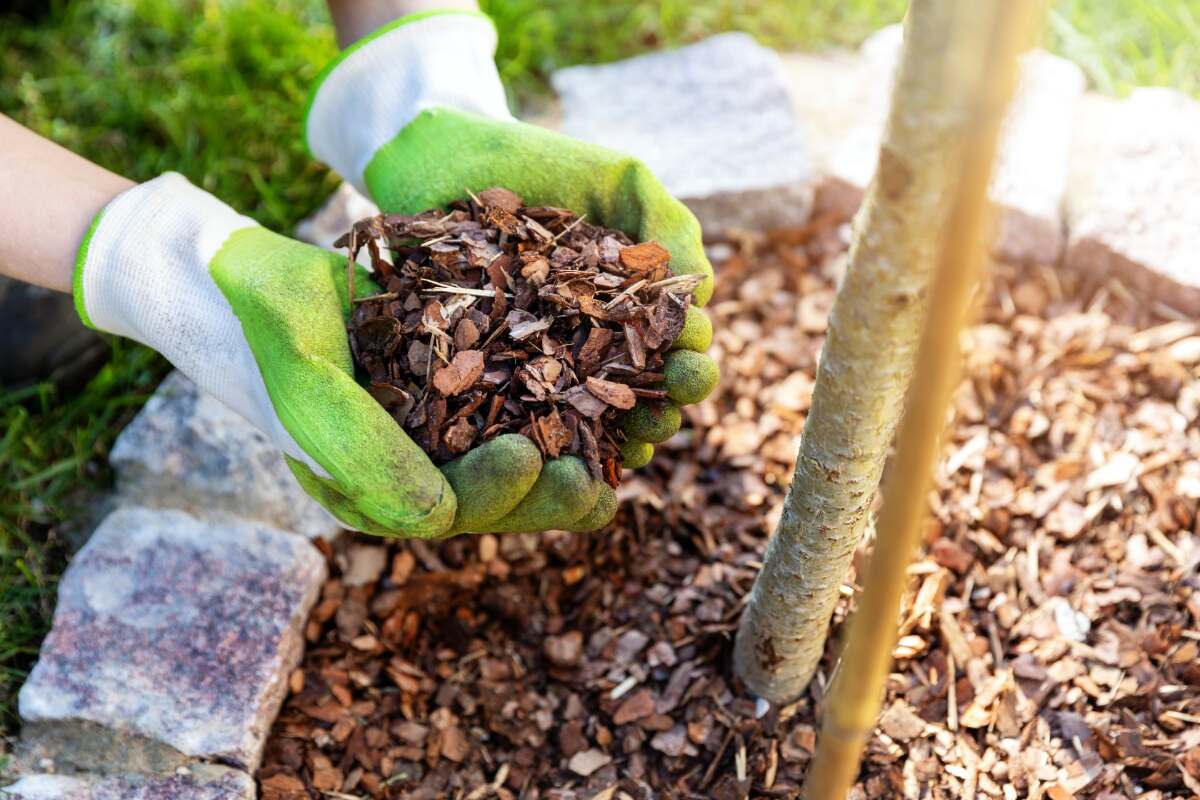
It’s that time of year again. The sun’s staying out longer, the garden’s getting greener, and the mulch could probably use a refresher. But just how often should you replace mulch? We give you a complete rundown to help you keep your flower bed or garden at the top of its game.
When Should You Replace Mulch?
Knowing how often to replace your old mulch is half the battle of fighting weeds in your garden or flower bed. Many inorganic mulches last anywhere from three to five years, while organic mulches will need to be replaced every one to two years. Here is when you should consider replacing or freshening up your mulch:
Your Mulch Color is Fading
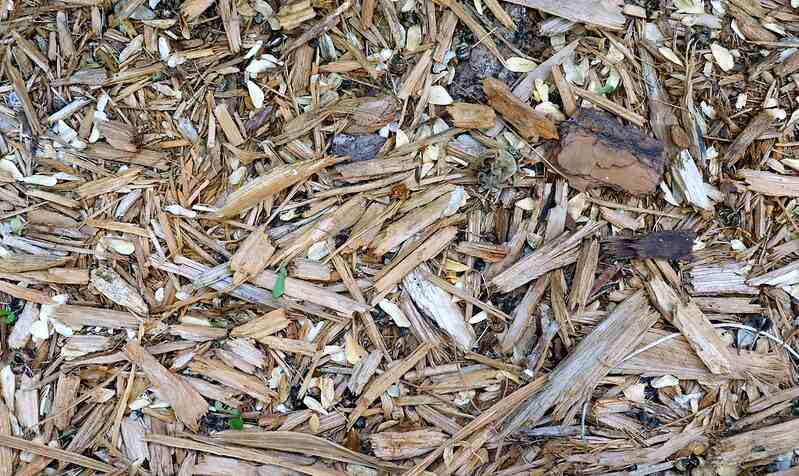
Discoloring is a clear sign that it’s time to get new mulch. Whether you have a dyed mulch or not, it will show signs of fading. This typically happens due to natural weather conditions and sun exposure.
If you notice fading, the mulch is likely on its last legs and struggling to protect your garden. As a last attempt to blow some color into your mulch, turn it with a rake. If that doesn’t work, replace it to maintain its coloring and keep your garden beds looking their best.
Weeds Are Sprouting Through Your Mulch
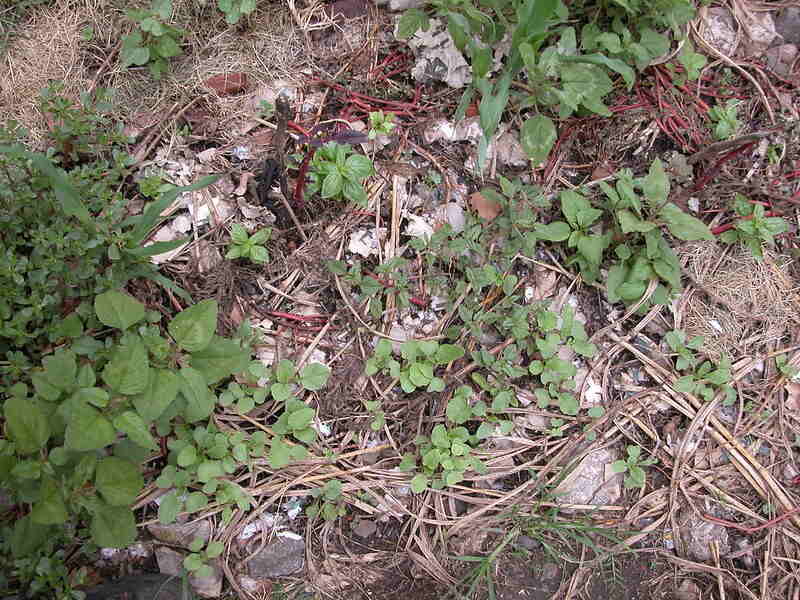
Weeds are probably the clearest indicator that you need to replace your mulch or change your mulching strategy. If your current mulching job isn’t doing the trick, try landscaping fabric underneath bark or rocks to keep the weeds from germinating.
At the start of spring, check for any new growth you didn’t plant yourself in late summer or fall. This will help you put together a lawn care plan that works.
Your Mulch is Sinking
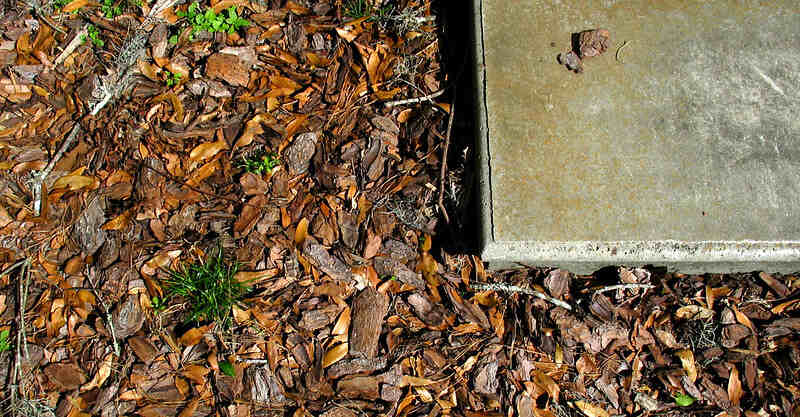
If you live in an area prone to heavy rainfall, extreme temperatures, and high humidity, you may notice that your mulch breaks down faster and visibly decreases in volume. As it sinks, it decomposes and provides beneficial nutrition for the soil, but this also means there is less of it to combat new weed growth and protect your soil and plants.
Check your mulch pile and add another layer to continue reaping the benefits.
You Want to Increase Curb Appeal
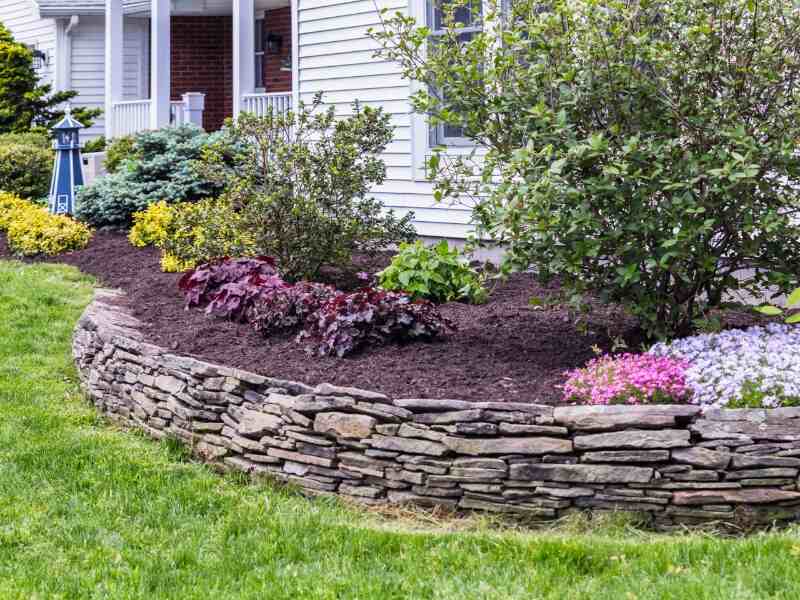
If aesthetics are a priority in your landscaping, replacing your mulch pile more often is a good idea to achieve that tidy, well-maintained look. Fresh mulch contributes to overall visual harmony, maintaining a vibrant color, boosting curb appeal, and complementing plants and hardscaping.
Ultimately, how often you replace your mulch depends on personal choice and tastes, so let those guide you.
You Notice Pests or Diseases
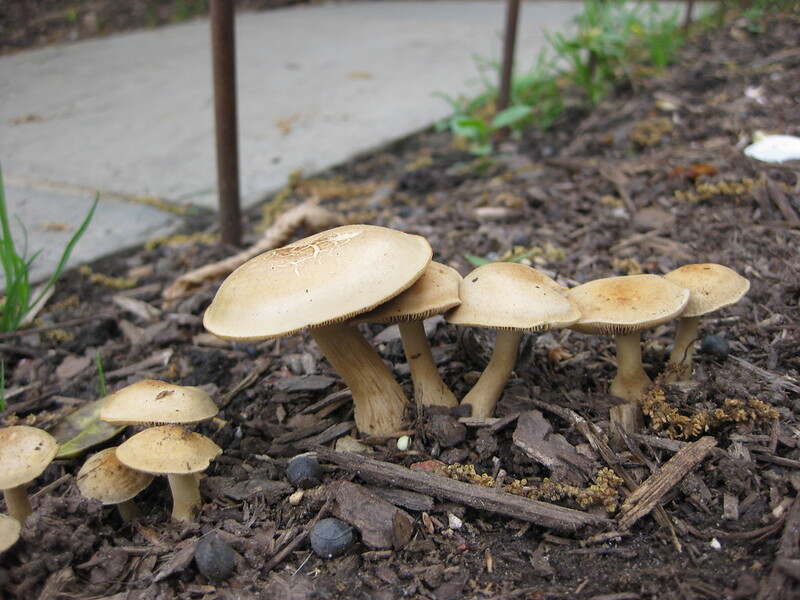
Inspect your mulch pile periodically to be aware of any diseases, pest infestations, or unusual mulch deterioration. Inevitably, some type of insect will make an appearance. Mulch piles are typically attractive to:
- Ants
- Termites
- Slugs
- Snails
- Earwigs
- Millipedes
- Centipedes
- Cockroaches
- Flies
At the same time, your mulch pile may become infested with diseases. These can include:
- Bacterial diseases or pathogens, such as bacterial blight
- Fungal diseases, such as powdery mildew, artillery fungus, bird’s nest fungi, and root rot
To minimize the problem, regularly turn and fluff your mulch pile to increase air exposure and circulation, avoid piling on the mulch materials too thick, avoid excessive watering to prevent high moisture levels, and try a combination of both organic and inorganic mulch to create a more pest- and disease-resistant environment.
Types of Mulch
The options can sometimes feel never-ending when staring at the long aisles of various available mulches. Should you get dyed or natural? Wood chips or bark? Landscape fabric or rocks?
To give you an idea of where to start, look at the following list of mulch materials, what they are, and what they offer for your lawn.
Organic
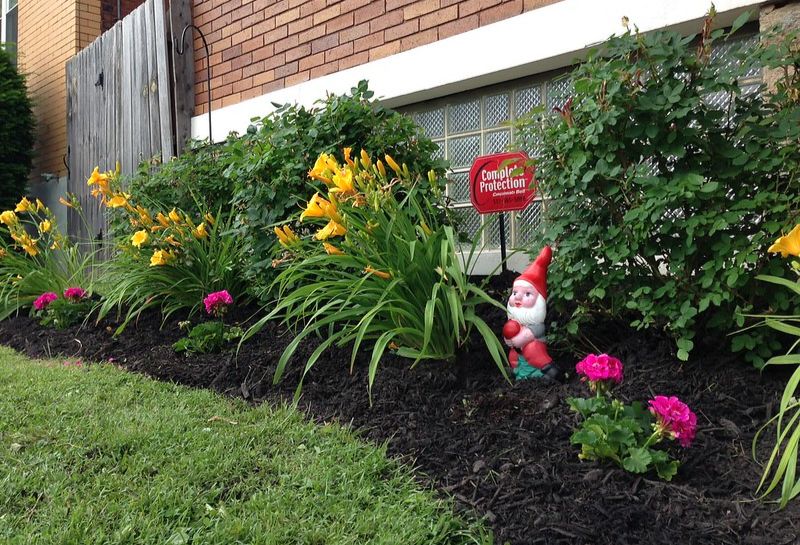
Organic mulch is the natural material that most people associate with mulch. These materials decompose over time and will eventually need a new layer. They include:
- Bark
- Leaves
- Pine needles
- Wood chips
- Compost
- Seaweed
- Straw or hay
- Manure
- Cocoa-bean hulls
- Grass clippings
At the store, you’ll typically find bags with a mixture of bark and wood chips. These will slowly get absorbed into the soil and require replacing more often than inorganic mulches.
A common thing you’ll see on organic mulch bags is their shredded index, which can be one of three types:
- Single-shredded mulch
- Double-shredded mulch
- Triple-shredded mulch
The first word indicates how many times bark or wood chips ran through a grinder. Shreddage will determine how thin and delicate they are. For example, triple-shredded mulch is thinner than single-shredded mulch. While most people prefer the look of triple-shredded mulch (it’s less clumpy), it needs to be replaced more often than the single or double-shredded variety.
Pros of Organic Mulches
- Available in various colors – Organic mulches, such as bark and pine straw, come in diverse colors, including black, brown, and red.
- Provide soil with healthy nutrition – Organic mulches benefit both the ground and your plants. Your soil will become more fertile, while your plants will grow healthier.
- Environmentally friendly – Organic matter is better for the environment. Using materials like straw, pine needles, or wood chips aligns with sustainable gardening practices and encourages the use of renewable resources.
- Improve water retention – Organic mulches improve soil moisture levels by reducing evaporation. This is ideal in hot and dry conditions, helping you conserve water and supporting plants during drought.
- Reduce compaction and erosion – As they cover the soil surface, organic mulches protect it against erosion caused by the elements. Plus, they maintain a loose soil structure, reducing the risk of compaction and nutrient, air, and water deficiencies.
Cons of Organic Mulches
- Need to be refreshed or replaced often – Most organic mulches need to be refreshed every year or two because they decompose.
- Not very hardy – These mulches may have trouble with the weather elements. Heavy rainfall may cause shifts or gaps in the mulch, translating to more necessary maintenance.
Inorganic
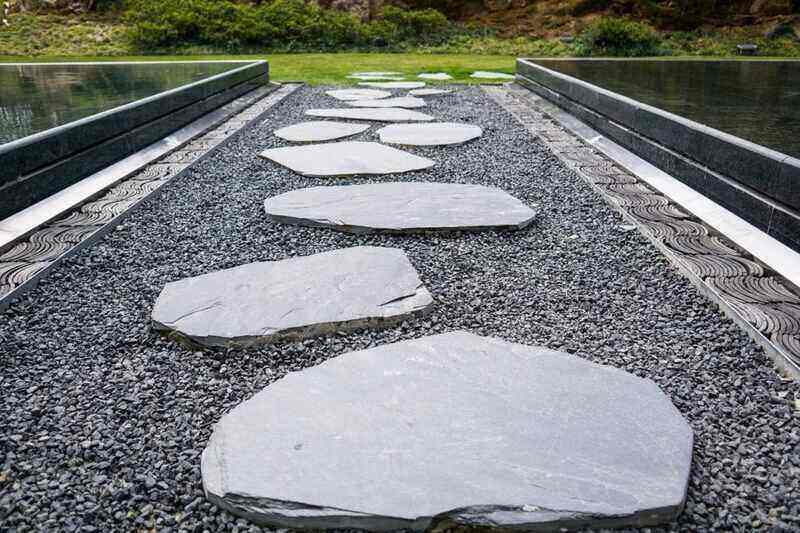
Inorganic mulches don’t decompose the same way organic mulches do. They also don’t provide the same level of nutrition for your soil. However, they require less maintenance, insulate the soil better, and are more resistant to heavy rain. Some inorganic mulch options include:
- Gravel
- Landscape fabric
- Pebbles
- Rubber
- River rocks
If you suffer from allergies, choose inorganic mulch for your yard. Unlike some organic mulches, this variety doesn’t produce allergens that can affect your health. Visit any local garden center or home improvement store and select the mulch that fits your needs. Some come in bagged form (suitable for smaller projects), while others can be found in bulk (best used in larger areas).
Pros of Inorganic Mulches
- Require less replenishment – These mulches are perfect for longevity. They do not need replacing as often and can last upwards of five years.
- Hardier – Since these mulches mainly consist of rock or plastics, they’re not as tarnished by the weather and don’t need much maintenance.
- Regulate soil temperature – Rocks and stones are good at absorbing and retaining heat, a handy quality in cold climates. They help warm the soil and contribute to healthy plant growth in spring.
- Contribute to good soil drainage – Gravel, rocks, and pebbles are ideal for good drainage, allowing water to pass through easily. This prevents waterlogging, root rot, diseases, and other issues typical of damp environments.
- Boost curb appeal – Besides their other benefits, inorganic mulches contribute to an eye-catching landscape.
Cons of Inorganic Mulches
- Don’t provide nutrients – Inorganic mulches last longer because they don’t decompose like organic mulches. But that also means that they don’t provide anything for the soil.
- Don’t support microbial activity – Don’t expect much in the way of microbial activity with inorganic mulches. Microorganisms significantly contribute to healthy soil and a robust ecosystem, but inorganic mulches can’t provide the same level of support in this respect.
- Provide fewer resources for plants and soil – While this isn’t necessarily an everyday thing, landscape fabric can sometimes limit the amount of oxygen the soil gets. Larger rocks can, at times, block water for plants and soil.
Benefits of Mulch
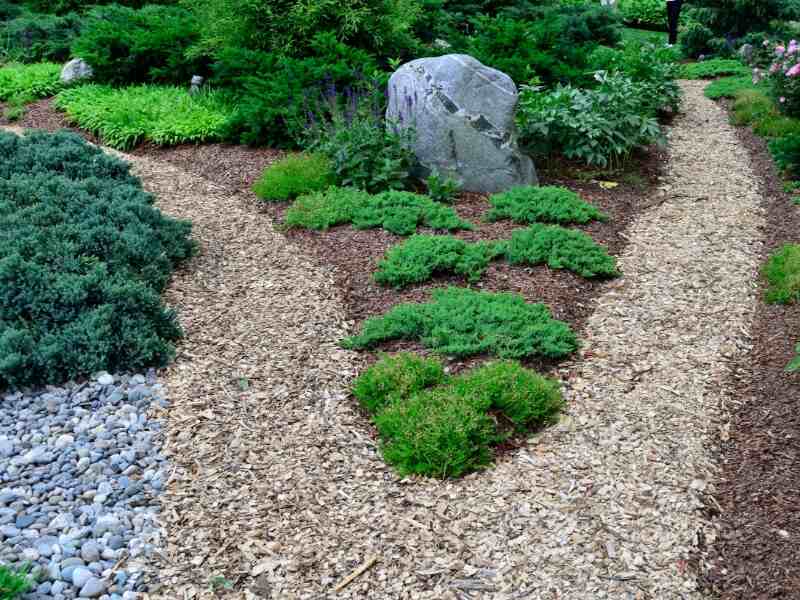
Many homeowners use mulch for moisture retention during particularly arid periods, but there’s more to mulch than meets the eye. Here’s everything this material can do for your yard:
- Blocks sunlight, interfering with weed germination and sprouting.
- Contributes to soil health by providing nutrients through organic matter that decomposes. This improves microbial activity, increases soil fertility, and prevents erosion.
- Regulates soil temperature in both cool and warm weather, providing better stability for grasses and plants.
- Reduces soil compaction by acting as a cushion and reducing the impact of foot traffic, heavy rainfall, and other environmental conditions detrimental to soil health.
- Boosts curb appeal by improving the appearance of flower beds and gardens.
- Prevents diseases by acting as a barrier.
If you’re worried about cost, try some creative ways of getting free mulch.
Tips for Applying Mulch
Once you’ve decided on a type of mulch, the next thing to do is apply it. Here’s how:
- Before you mulch: The first thing you should do to make your mulch last is weed. It’s nobody’s favorite chore, but it will keep you weed-free longer. Besides that, consider leveling the soil surface to create an even base for your mulch.
- Best time of year to apply mulch: Early spring is the best time to apply mulch after your spring plants are in the ground. It prevents weeds or diseases from taking hold in your garden.
- How to spread mulch: Homeowners commonly spill the mulch out in piles in their mulch, flower, or garden bed and then go through with a rake or their hands to spread it out evenly. You can load the mulch into a bucket or wheelbarrow for easier transportation to the mulching site.
- How deep to apply mulch: One layer of mulch should only be 3 to 4 inches deep. This amount provides protection and nutrients without harming the plant. Too much mulch can limit the amount of water and oxygen available to the plant.
- How to mulch around trees: Stay clear of the actual plant or tree root when mulching. If you have young trees, mulch about three to five inches away. Place mulch at least eight to ten inches away from mature trees. Mulch should not pile up against them because it can cause what’s known as “mulch volcanos.” This can cause the tree’s roots to poke up from beneath the ground and become vulnerable.
FAQ About How Often You Should Replace Mulch
How Much Mulch Do I Need?
You’ll want to break out the calculator to know the amount of mulch you’ll need for your yard. To calculate mulch in yards, you should know that one cubic yard of material will cover an area of 324 square feet.
The formula is square footage times desired depth (inches) divided by 324. Or, you could get a few bags and hope for the best.
If you don’t have the time to revisit middle school math, you might want to try one of these handy mulch calculators to get an accurate number.
Which Mulch Lasts the Longest?
Cedar mulch is an organic mulch famous for its longevity. It decomposes slower than most organic mulches, with a typical lifespan of four to seven years. However, most inorganic mulches, such as rocks, require less maintenance and replacement.
What Type of Soil Makes Mulch Last the Longest?
Some soils support long-term mulch effectiveness, while others pose quite a challenge. You’re in luck if your soil is well-draining (sandy, loamy). Water can move through the soil easily, preventing excessive moisture buildup around your mulch pile. This prevents matting, fungal or bacterial problems, and premature mulch decomposition.
On the flip side, waterlogged or overly compacted soils can impact the effectiveness and lifespan of your mulch. When air and water have limited movement space, your mulch will decompose considerably faster, forcing you to replenish the mulch pile ahead of schedule.
How Does Budget Factor into Mulching?
Mulching requires careful attention to budget and the availability of mulch materials.
If you’re on a tight budget, there are plenty of ways to get some free mulch. The city, utility companies, and woodworking shops regularly dispose of mulching materials you can use in your yard. Newspapers, leaves, or grass clippings also can do the trick.
For those with higher budget flexibility, mulches such as stone or rubber may be an excellent long-term investment. They have a longer lifespan, reducing maintenance efforts on your part. Their one drawback is that they’re not biodegradable, which may influence your decision if environmental impact matters.
Get That Professional Touch
One of the best things you can do for your yard to make it stand out is to spread fresh mulch to your flower and garden beds. A well-landscaped lawn with the right plants and new mulch sends a strong statement about your home.
If you’re simply undecided or don’t know where to start, consider contacting one of our local landscaping pros to do the math and mulching for you. That way, your flower and vegetable beds will look impeccable, and you’ll be free to spend your time as you see fit.
Main photo credit: ronstik / Canva Pro / License